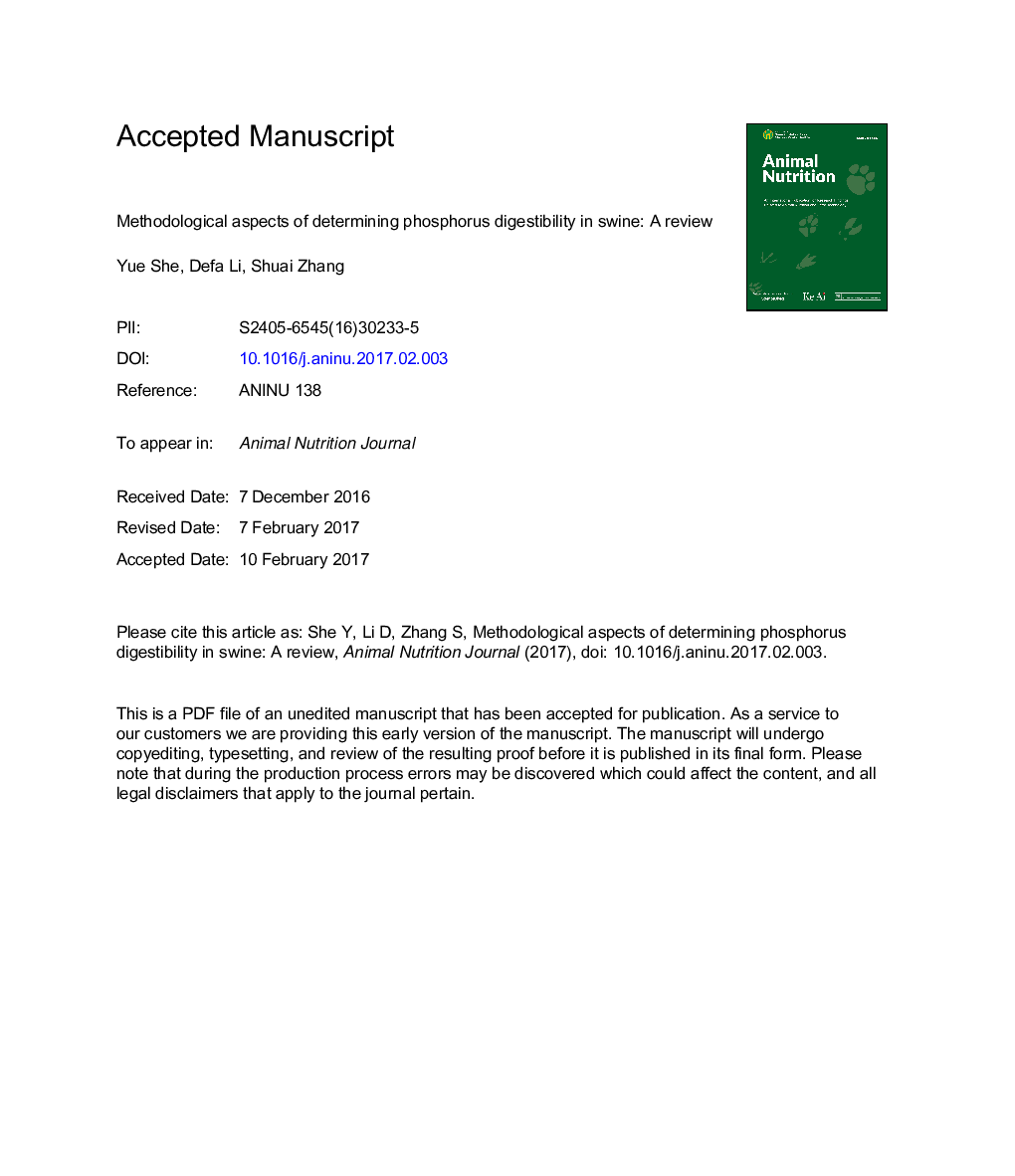| Article ID | Journal | Published Year | Pages | File Type |
|---|---|---|---|---|
| 8882580 | Animal Nutrition | 2017 | 27 Pages |
Abstract
The role of phosphorus (P) in swine nutrition has been taken on new significance in recent years. Methods to determine the available phosphorus (AP) content of swine feeds include relative bioavailability (RBV), apparent total tract digestibility (ATTD), standardized total tract digestibility (STTD), and true total tract digestibility (TTTD). The RBV of P is determined by measuring bone ash or bone P, whereas the ATTD of P is determined by calculating the difference between P intake and P excretion in feces. Recent research has shown that the use of ATTD of P underestimates the AP due to the existence of endogenous P in feces and digesta. The STTD can be calculated from ATTD by taking basal endogenous phosphorus losses (EPL) into consideration. The basal EPL in pigs can be measured by feeding a P-free diet. Values for STTD of P are believed to be additive in mixed diets but not for ATTD of P. The regression method is a common approach to determine total EPL and TTTD of P, which measures the linear relationship between fecal P excretion and the dietary intake of total P. In addition, in vitro methods such as the bionic enzymatic method are being increasingly utilized because they can be done quickly and simply. Several dietary factors such as P and Ca concentrations, phytate, Ca to P ratio and vitamin D may affect AP. This review summarizes the evolution of methods to measure AP and factors that can affect AP, which may provide information to formulate swine diet more accurately. Moreover, the knowledge about AP may help to reduce the P waste in swine production and thus decrease its impact on the environment.
Related Topics
Life Sciences
Agricultural and Biological Sciences
Animal Science and Zoology
Authors
Yue She, Defa Li, Shuai Zhang,
